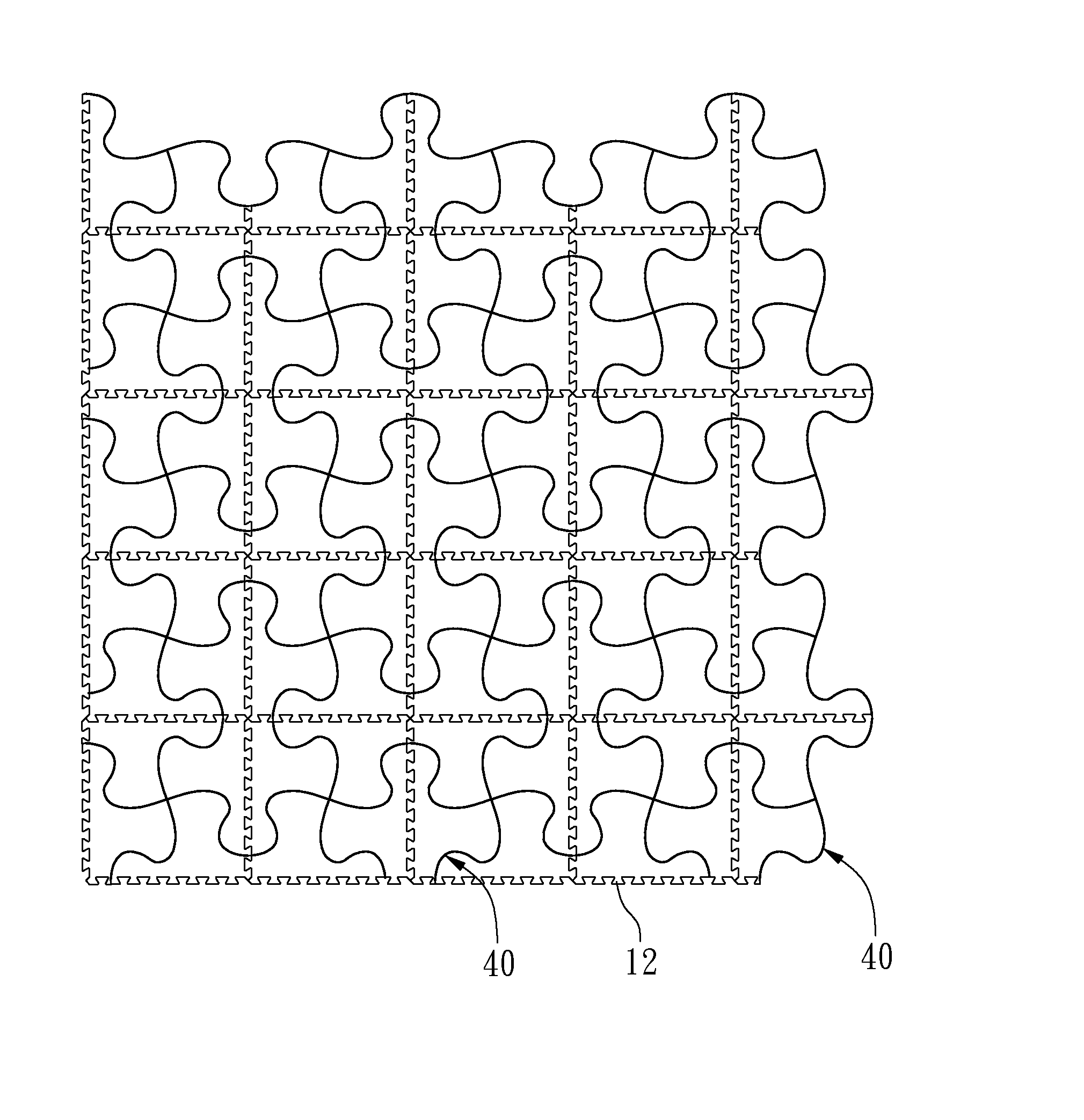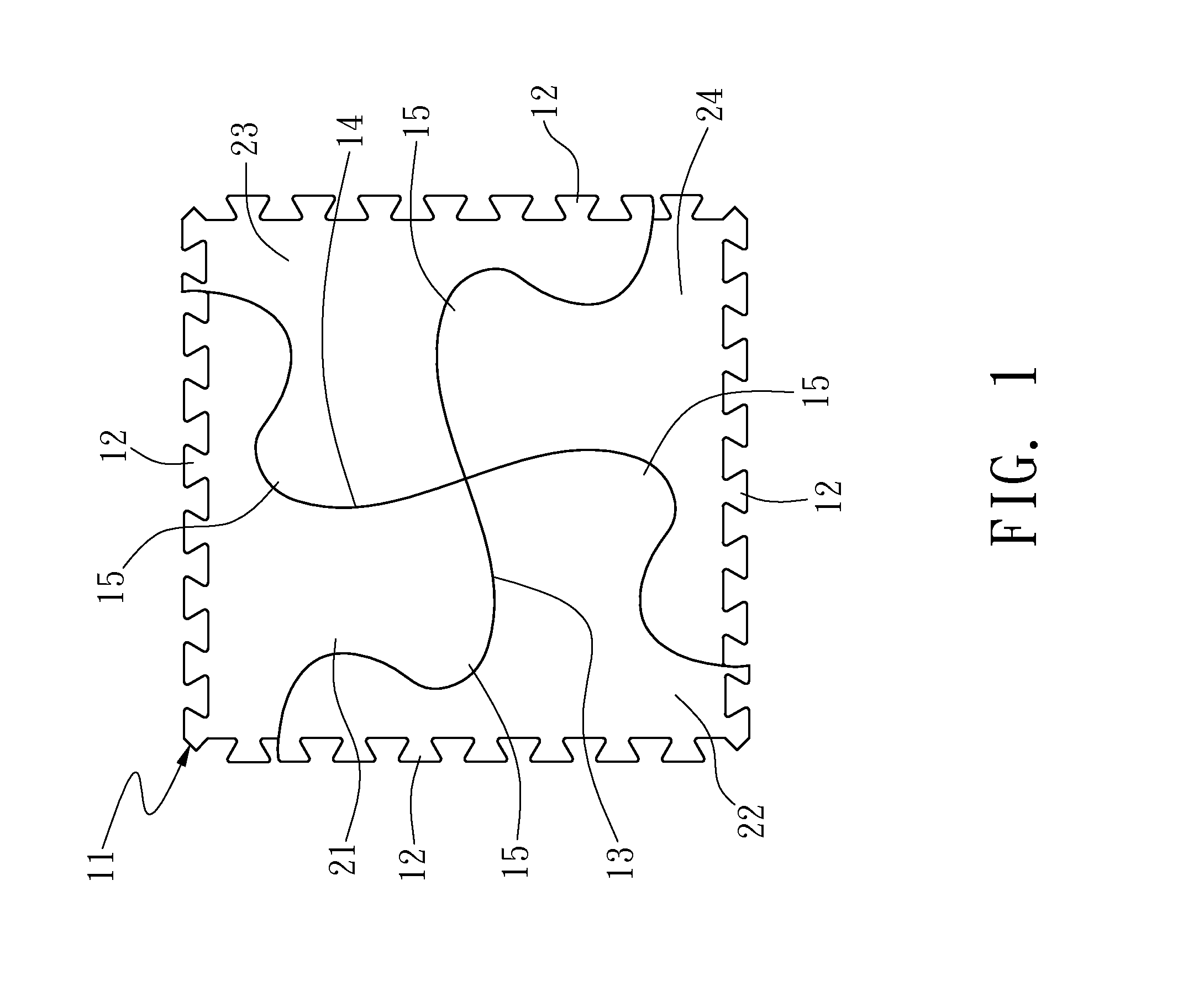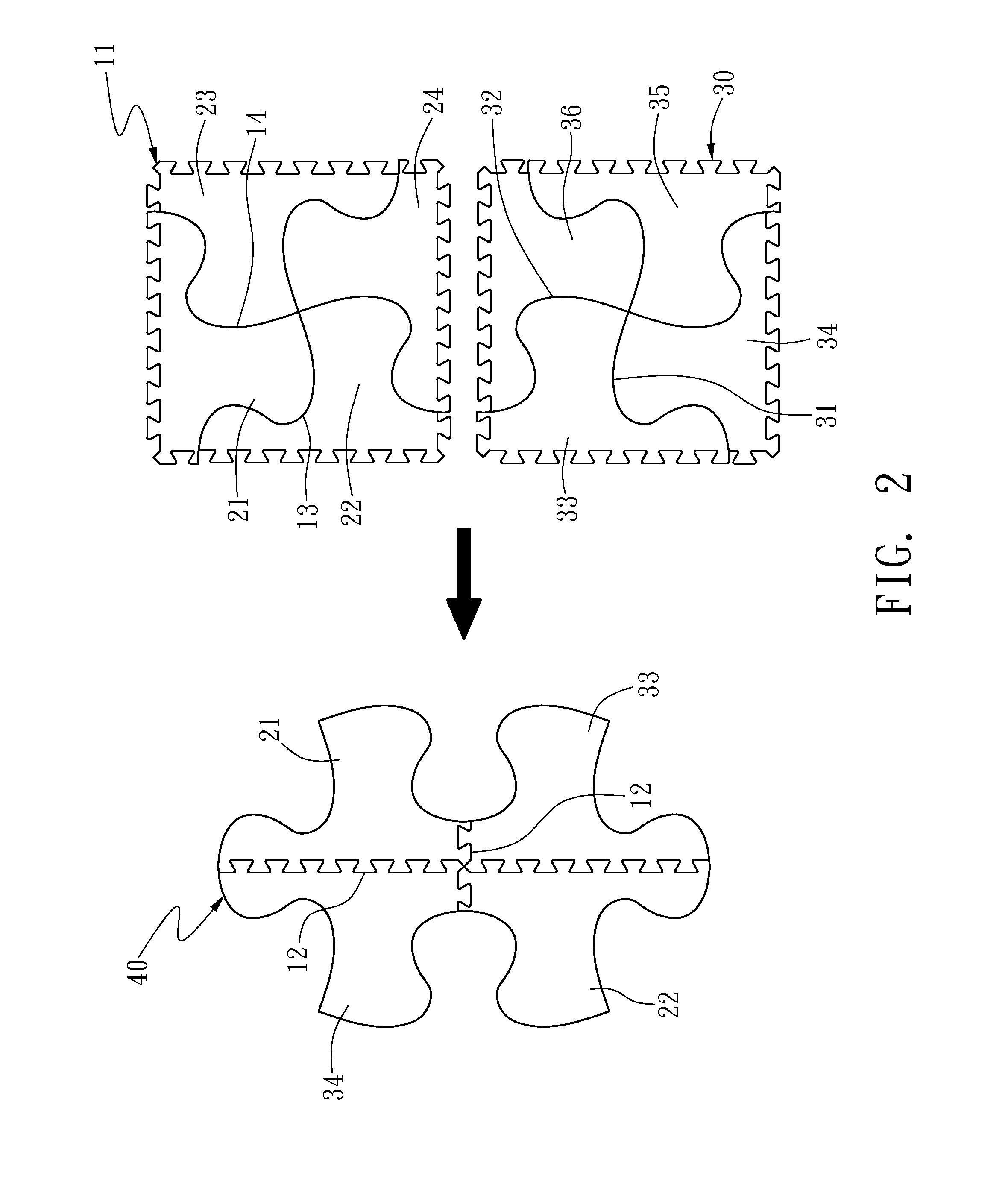Mat with puzzle function
a mat and function technology, applied in the field of mats with puzzle functions, can solve the problems of high manufacturing cost of conventional mats, lack of changes, boring general assembly of mats, etc., and achieve the effect of reducing production costs and reducing was
- Summary
- Abstract
- Description
- Claims
- Application Information
AI Technical Summary
Benefits of technology
Problems solved by technology
Method used
Image
Examples
first embodiment
[0024]Please refer to FIG. 1 for the disclosed mat with the puzzle function. The mat 11 is a square object with four sides, each of which has a tooth part 12 with a succession of teeth. The mat 11 has two cutting lines 13, 14 toward the two pairs of opposite sides and crossing at the center thereof, dividing the mat 11 into four blocks 21, 22, 23, 24. The two cutting lines 13, 14 curve in a regular way so that the corresponding parts of the blocks 21, 22, 23, 24 have assembling parts 15 with complementary shapes for engagement.
[0025]In the first embodiment, the two cutting lines 13, 14 divide the mat 11 into four blocks 21, 22, 23, 24 of the same shape. Therefore, any two blocks of the mat 11 can connect with two symmetric blocks of another mat, thereby constituting a symmetric puzzle mat set with two pairs of opposite sides having assembling parts of the same shape. As shown in FIG. 2, any two blocks 21, 22 of the mat 11 can form two diagonal parts of the symmetric puzzle mat set 4...
second embodiment
[0029]FIG. 5 shows the disclosed mat with the puzzle function. The mat 11b is also a square object. Each side of the mat 11b has a tooth part 12b with a succession of teeth. The mat 11b has two cutting lines 13b, 14b along the diagonal directions and crossing at the center thereof in the shape of an X, dividing the mat 11b into four blocks 21b, 22b, 23b, 24b. The two cutting lines 13b, 14b are curved in a regular way so that the blocks 21b, 22b, 23b, 24b have assembling parts of complementary shapes for engagement.
[0030]In the second embodiment, the two cutting lines 13b, 14b divide the mat 11b into four block 21b, 22b, 23b, 24b identical in shape. Two of the blocks 21b, 22b, 23b, 24b form half of the symmetric puzzle set 40b with same assembling parts on the two pairs of opposite sides. Thus, one block 21b of the mat 11b and another block 22b of the mat 11b engage via the tooth parts 15b to form the symmetric puzzle mat set 40b. The remaining blocks 23b, 24b of the mat 11b form ano...
third embodiment
[0031]However, the disclosed mats are not limited to form symmetric puzzle mat sets. FIG. 6 shows a third embodiment in which the non-symmetric puzzle mat set 40c has complementary assembling parts on the two pairs of opposite sides. The mat 11c also has a square shape. Each side of the mat 11c has a tooth part 12c with a succession of teeth. The mat 11c has two cutting lines 13c, 14c, toward the two pairs of opposite sides and crossing at the center, thereby dividing the mat 11c into four blocks 21c, 22c, 23c, 24c. The cutting lines 13c, 14c are curved in a regular way so that corresponding parts of the blocks 21c, 22c, 23c, 24c, have assembling parts 15c with complementary shapes for engagement. Each of the blocks 21c, 22c, 23c, 24c becomes one quarter of a non-symmetric puzzle mat set. As a result, the blocks 21c, 22c, 23c, 24c of the mat 11c engage with one another to form the non-symmetric puzzle mat set 40c.
PUM
| Property | Measurement | Unit |
|---|---|---|
| perimeter | aaaaa | aaaaa |
| shape | aaaaa | aaaaa |
| structure | aaaaa | aaaaa |
Abstract
Description
Claims
Application Information
 Login to View More
Login to View More - R&D
- Intellectual Property
- Life Sciences
- Materials
- Tech Scout
- Unparalleled Data Quality
- Higher Quality Content
- 60% Fewer Hallucinations
Browse by: Latest US Patents, China's latest patents, Technical Efficacy Thesaurus, Application Domain, Technology Topic, Popular Technical Reports.
© 2025 PatSnap. All rights reserved.Legal|Privacy policy|Modern Slavery Act Transparency Statement|Sitemap|About US| Contact US: help@patsnap.com



